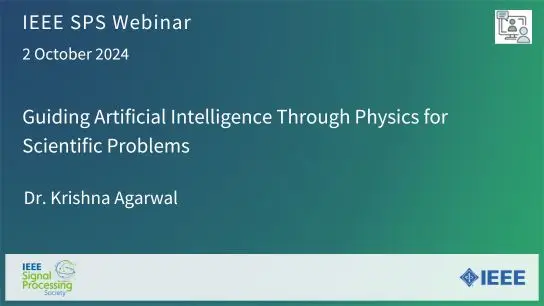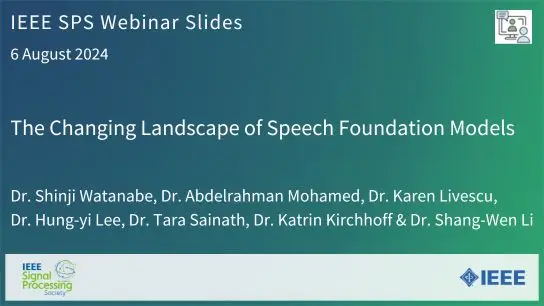Deep Networks for Direction-of-Arrival Estimation in Low SNR
Dr. Georgios Papageorgiou, Dr. Mathini Sellathurai
-
Members: FreeSPS
IEEE Members: $11.00
Non-members: $15.00Length: 01:03:30
Direction-of-Arrival (DoA) estimation is a fundamental problem in array signal processing with applications in various fields such as radar, sonar, wireless communications, and audio processing. Machine Learning (ML) techniques, and in particular Deep Learning (DL), have recently demonstrated increased accuracy and effectiveness in tasks that involve pattern recognition, data analysis and decision-making. In this talk we present a modern approach to DoA estimation based on DL that can overcome some of the challenges and limitations of conventional methods, such as noise, clutter, interference, jamming, ambiguity, and uncertainty. The approach has the potential to instigate novel functionalities and applications for radar systems, including as adaptive beamforming, cognitive radar, and multi-sensor fusion. We introduce a Convolutional Neural Network (CNN) that predicts angular directions in the low signal-to-noise-ratio (SNR) regime using the sample covariance matrix estimate. The network is trained from multi-channel data of the true array manifold matrix. We adopt an on-grid approach to model the problem as a multi-label classification task and train the CNN to predict DoAs across all SNRs. The proposed architecture demonstrates enhanced robustness in the presence of noise and resilience to a relatively small number of snapshots. Experimental results show significant performance gains in the low-SNR regime compared to the state-of-the-art methods and without requiring parameter tuning in both cases of correlated and uncorrelated sources. Finally, we relax the assumption that the number of sources is known a priori and present a training method where the CNN learns to infer their number and predict the DoAs with high confidence. The increased robustness of the proposed solution is highly desirable in challenging scenarios that arise in several fields, ranging from wireless array sensors to acoustic microphones and sonars.


